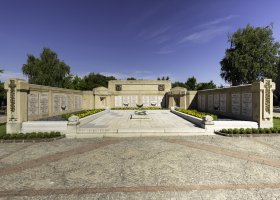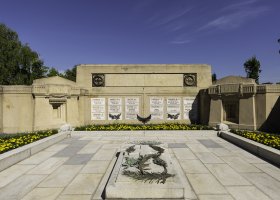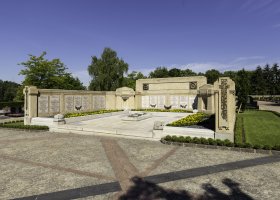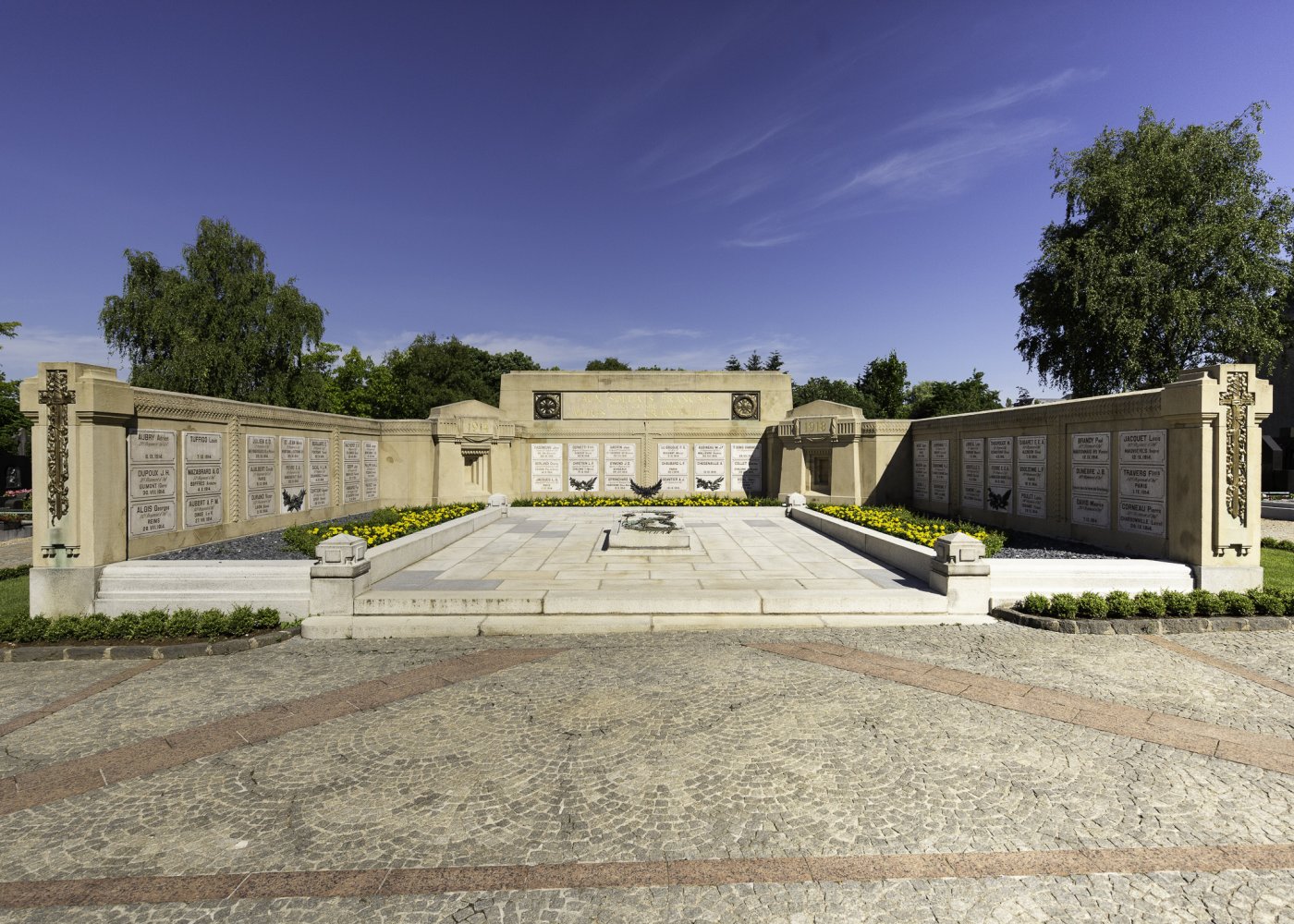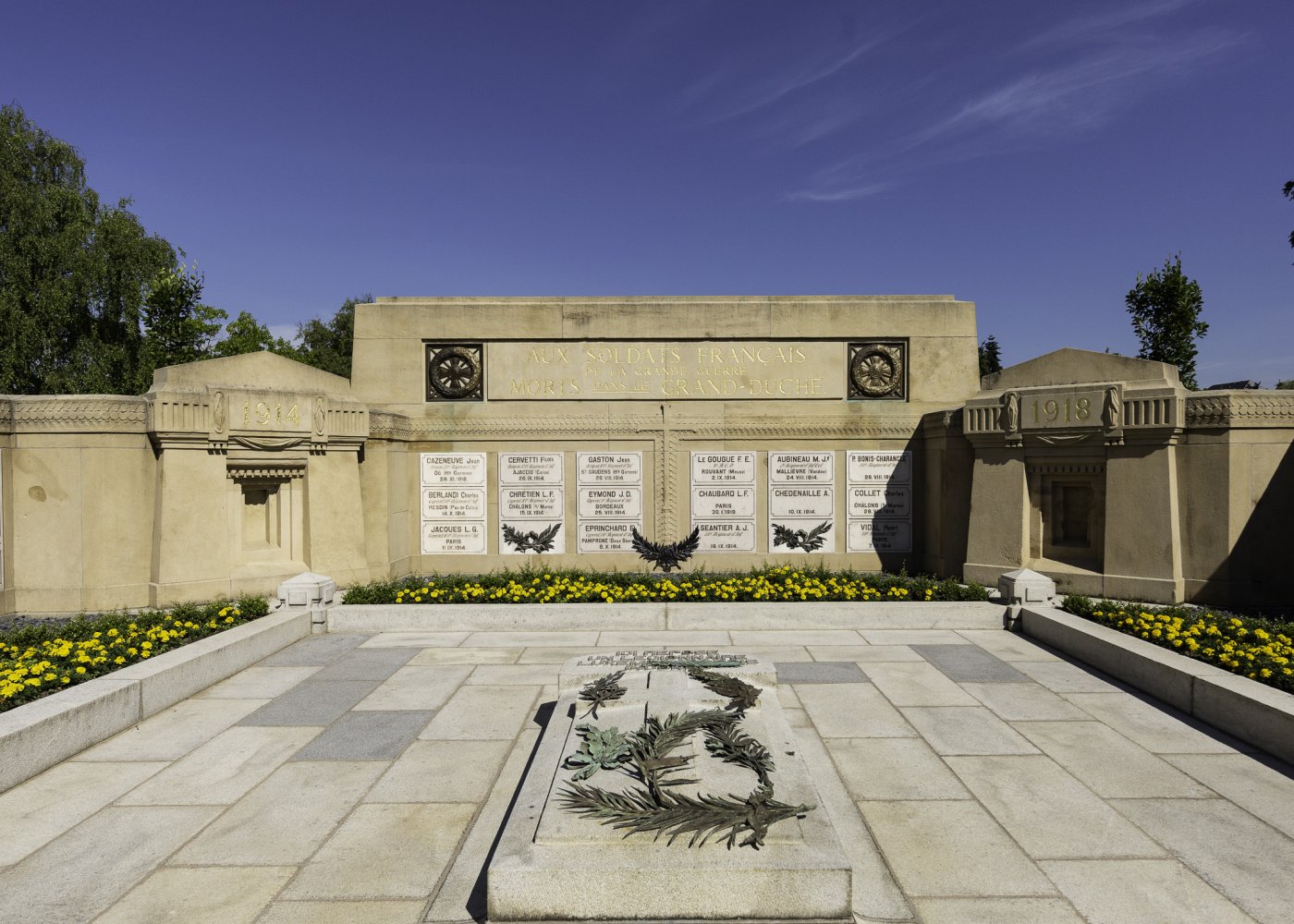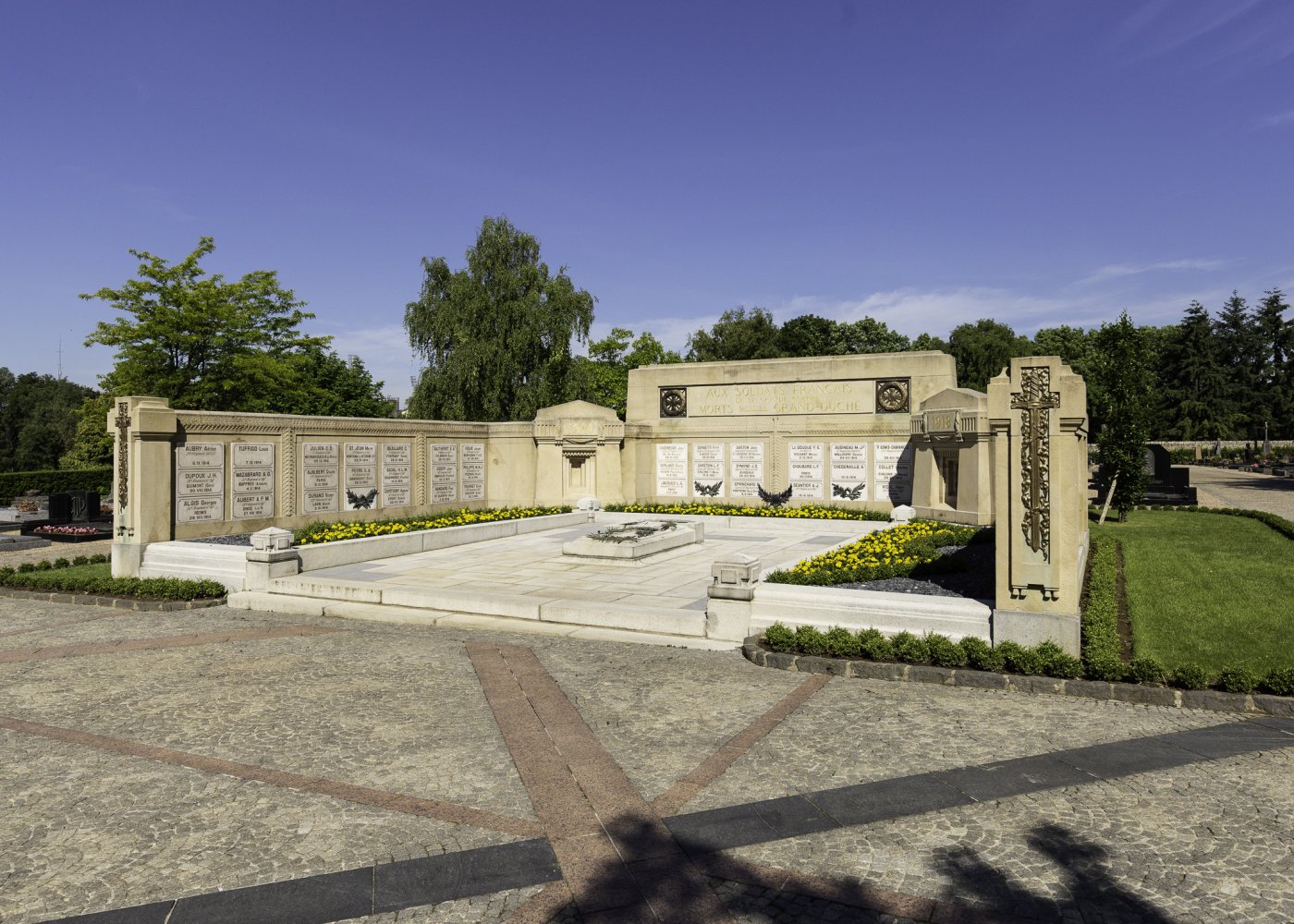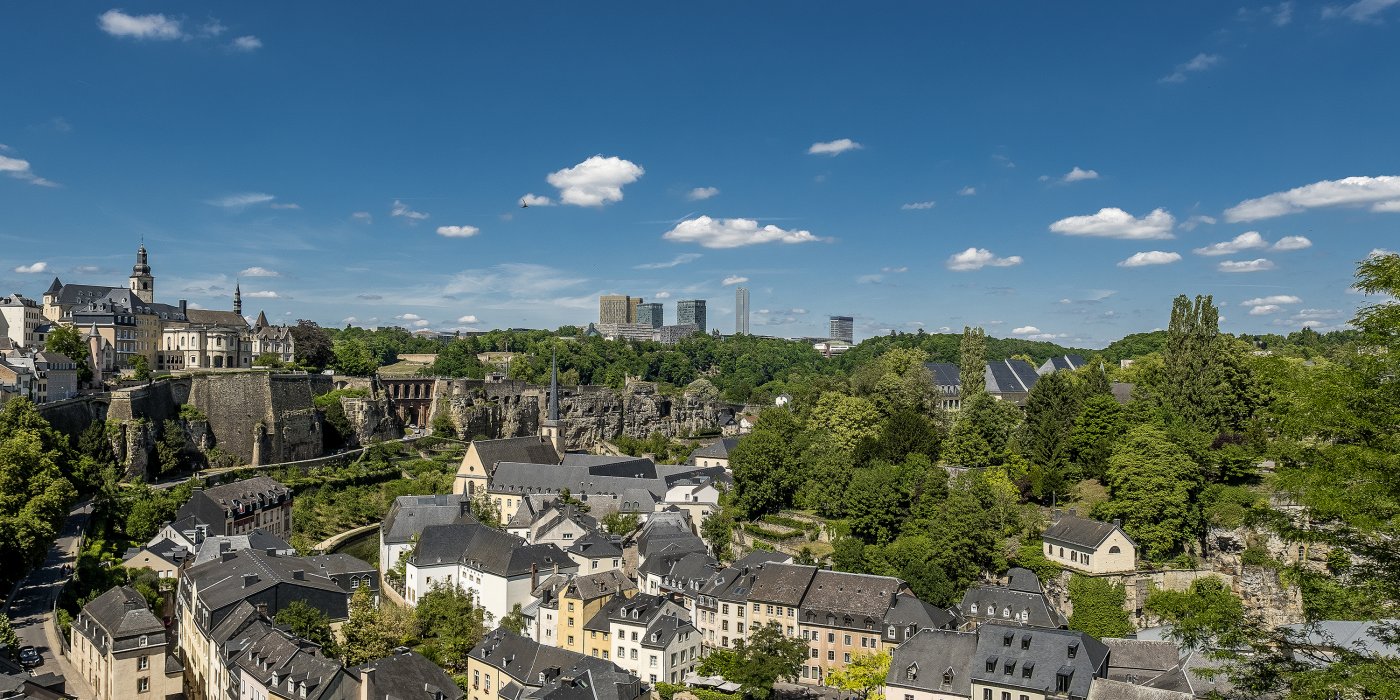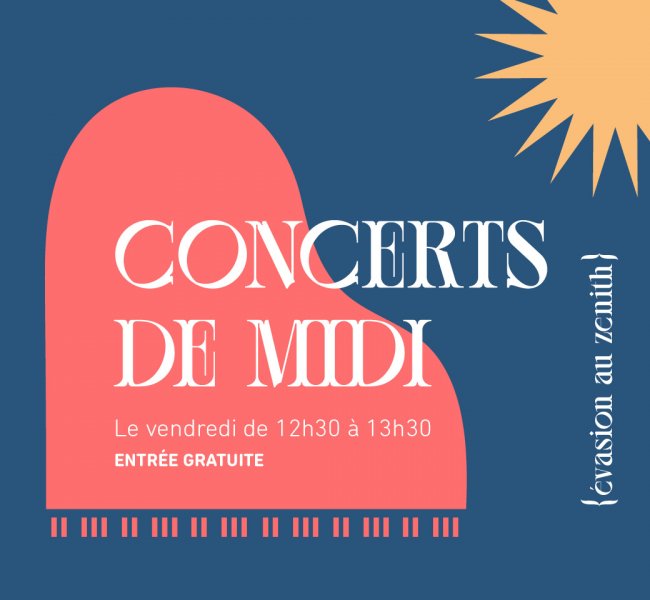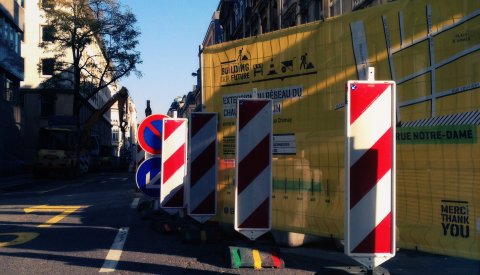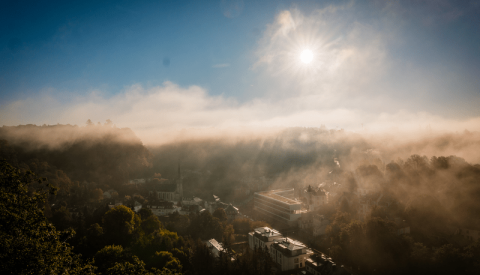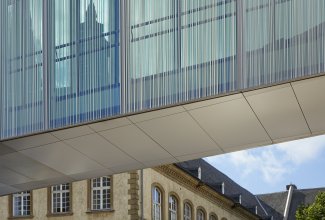Description
The inauguration of the memorial to the unknown French soldier in Notre-Dame Cemetery in Luxembourg City dominated the news over the weekend of 15 and 16 November 1924. The speeches at the inauguration highlighted the value of loyalty, making references to John the Blind – a legendary figure in Luxembourg's history – and mentioning the tomb of the unknown soldier at the Arc de Triomphe in Paris.
At the end of World War I, the remains of enemy soldiers were separated and the Clausen cemetery was set aside for the German soldiers. Meanwhile, in 1919, the heroes and victors in the war were given a choice location in Notre-Dame Cemetery. On 27 April 1924, they were joined by 56 French soldiers who had died in Luxembourg hospitals, and by the remains of unknown Luxembourgish soldiers, most of whom had died ten years earlier on the battle fields in Guipe in the French region of Champagne. Upon their transfer to Notre-Dame Cemetery, they were awarded the highest national honours. The community that spearheaded this initiative comprised the Souvenir Français vmovement as well as the Alliance Française, the Société française de bienfaisance, the Association des dames françaises, the Union des femmes de France, the Amicale des Anciens Engagés volontaires luxembourgeois de la Grande Guerre, and the alumni association of the École Normale Supérieure. The initiative received support from HRH Grand Duchess Charlotte. The Luxembourg City mayor agreed to provide the plot for the monument.
Joseph Nouveau and Léon Muller – both students of Victor Laloux, the eminent architect who designed the Gare d'Orsay and St Martin's basilica in Tours – were chosen to design the monument, a decision that reflected a desire to prioritise quality and spotlight the French language and culture. The craftsmen who were selected, including memorial mason Hubert Jacquemart and art metalworker Michel Haagen (who won the Grand Duke Adolphe Prize) were considered great artists of their time. The monument also reflects a bold artistic choice, with abstraction chosen over representational art, and the use of both reinforced concrete and local stone from Ernzen. The developers preferred modern architecture that incorporated concrete as a new construction material, even in funerary art. The mausoleum forms an open rectangle, with small gardens laid out in front of Czech granite plaques bearing the names of the deceased. The frame at the back of the space bears the inscription "To the French soldiers of the Great War who gave their lives in the Grand Duchy", while a plaque bearing a cross in the centre of the area forming the memorial reads "Here lies an unknown Luxembourgish soldier". As pilgrimage tourism to battlefields and military cemeteries was beginning to develop, the Soupert-Schambourg publishing house, in conjunction with the "Site" association, published a guidebook in French, Italian, English and Luxembourgish providing a detailed description of this mausoleum and other monuments in the city.
In his remarks, Minister of State Émile Reuter sought to emphasize, without a shadow of a doubt, the contribution of the Luxembourg people to the triumph of the Allies who, as the winners of the war, came together to negotiate economic terms for the future. Other attendees at the inauguration of the memorial were Édouard Herriot, President of the French Council of Ministers and Minister of Foreign Affairs, the Belgian Prime Minister Georges Theunis, the Belgian Minister of Foreign Affairs Paul Hymans, Prince Félix, and the Bishop of Luxembourg, Msgr Pierre Nommesch.
The leader of the initiative and chairman of the Souvenir Français movement in Luxembourg City was Gabriel Maugas. Maugas, an engineer who attended the École Polytechnique, had accompanied Marshal Foch on his travels to Luxembourg City in 1918. He became managing director of Hauts-fourneaux et Aciéries de Differdange-St Ingbert-Rumelange (HADIR) and lived in the Hannoncelles villa on Boulevard Joseph II, where Marshal Foch resided during his stay in Luxembourg City.
The construction of the mausoleum represented the joining of the Luxembourg people with the Belgian and French allies to form a united front against a defeated Germany. This is why these prominent guests attended the inauguration ceremonies, and it explains why the events in Luxembourg City emphasised the idea of replacing military strategy with economic strategy in order to create lasting peace.
